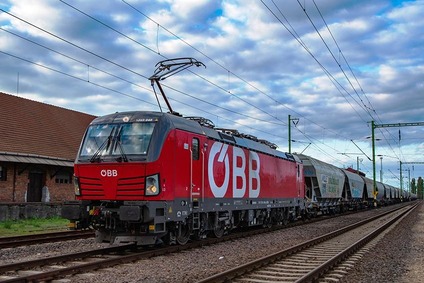
Further growth in transport is only limited by the handling capacity and the number of freight wagons available.
In the first quarter of 2022, 41,000 tonnes of crops arrived from Ukraine in the organisation of Rail Cargo Logistics - Hungaria, the Hungarian subsidiary of the Rail Cargo Group. The shipment of an additional 85,000 tonnes are forecasted by the end of June. The destination of the grain transports is mainly Italy, smaller quantities arrive for Hungarian customers for stockpiling purposes.
The need to replace the routes via the Black sea ports leads to a transport requirement of up to yearly five million tonnes of grain via Hungary. This demand is offset by the performance of the handling capacities (over 1,000 tonnes/day) and the limited number of freight cars.
700 grain wagons of Rail Cargo Hungaria (RCH), the Hungarian subsidiary of the Rail Cargo Group, handling 75 percent of the Hungarian grain transports, and 1,500 assigned wagons by the Rail Cargo Group are primarily available for the export transport of one million tonnes of Hungarian harvest. Although RCH strives to provide freight wagons for the new transports, the demands can only be met if among others from customer-side, there are available wagons that were not specially built for grain transport, but are also suitable for this purpose.
In the past, grain from Ukraine rarely came to Hungary by rail. Because of this, the capacity to transport such quantities of crop, including the equipment of loading and storing the harvest, was not established. In addition, the throughput capacity of the railway track is limited, due to the current maintenance work of the Hungarian railway infrastructure. The growth in Ukrainian grain traffic started in November 2021, as traders replenished their domestic stocks due to the high Hungarian purchase prices. The current war situation accelerated the pace of shipments even more, and the volume of the crop also increased.
The Rail Cargo Group in Hungary is working on the implementation of comprehensive rail and logistics solutions in order to be able to meet the increased demand.
